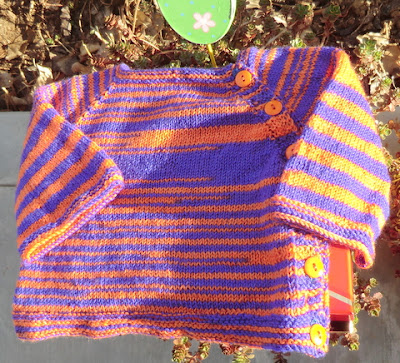Found this novelty and placed it in the bath to give visitors a laugh, or else wonder what in the world this was doing on top of the toilet!
According to most renditions of the Musicians of Bremen story, there was a cock, a hound, a cat and a donkey. So a bit of literary license was taken by the crafter who put together the animals doing service as the musicians. You could say there were several morals to the story, but I'll go with the one that speaks of not letting your imagination get away with the facts of the situation.
These alstroemeria are beauties that last two weeks if you regularly change their water. The hub brought them home from the grocery store the other day. He did a good job!
This ground cover is coming up in the back right now. Aren't the little blue flowers pretty? And grape hyacinths too!
One of our first daffodils:
And finally, I finished that cowl called Leafy Wreath Cowl (pattern found here on Ravelry).
It hides a multitude of sins on that double chin! It was a bit of a challenge knitting this up (cables and lace), but it feels soft on the skin and is warm to boot. Yarn is by Quince & Co. Details here.


































+Driven+by+the+Spirit+(2).jpg)

















.JPG)